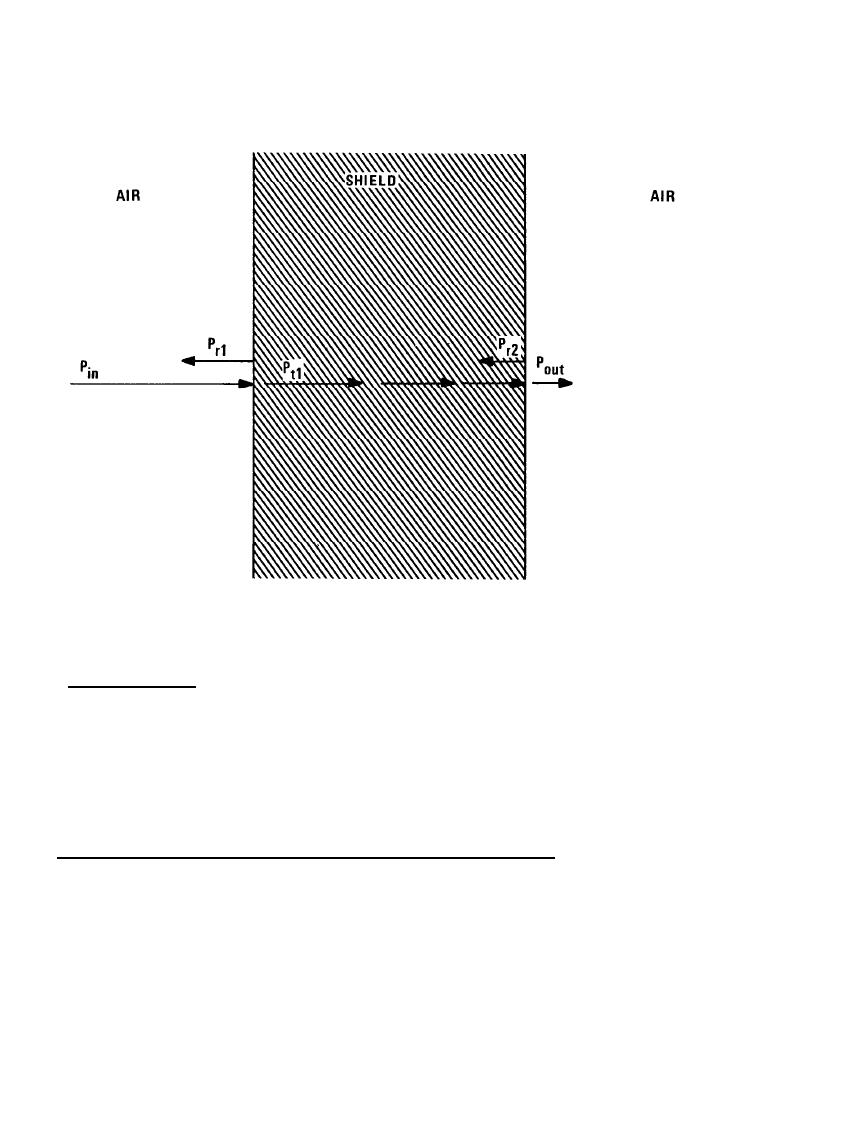

Custom Search
|
|

|
||
 MIL-HDBK-419A
Figure 8-2. Transmission Line Model of Shielding
8.2.3 Nonuniform Shielding. Nonuniform shielding theory has been developed to deal with wave transmission
through defects. It treats the defect as a transmission path in parallel with that representing transmission
through the shielding material itself. The net shielding effectiveness of any practical enclosure is calculated as
the result of all such parallel transmission paths, carefully considering transmission phase differences. The
equipment design process, regardless of the theory utilized, consists of establishing undesired signal levels on
one side of the proposed shielding barrier, estimating tolerable signal levels on the other side, and trading off
shield design options to achieve the necessary effectiveness level.
8.3 SHIELDING EFFECTIVENESS OF CONTINUOUS SINGLE-THICKNESS SHIELDS.
The plane wave theory (or transmission line theory) of shielding is the basis of the most commonly used
shielding design data. The resulting set of design equations, graphs, tables, and nomographs is based upon the
separation of the shielding effectiveness into three additive terms: absorption loss, reflection loss, and a
correction term to account for re-reflections within the shield.
8-4
|
 |
|
 |
||